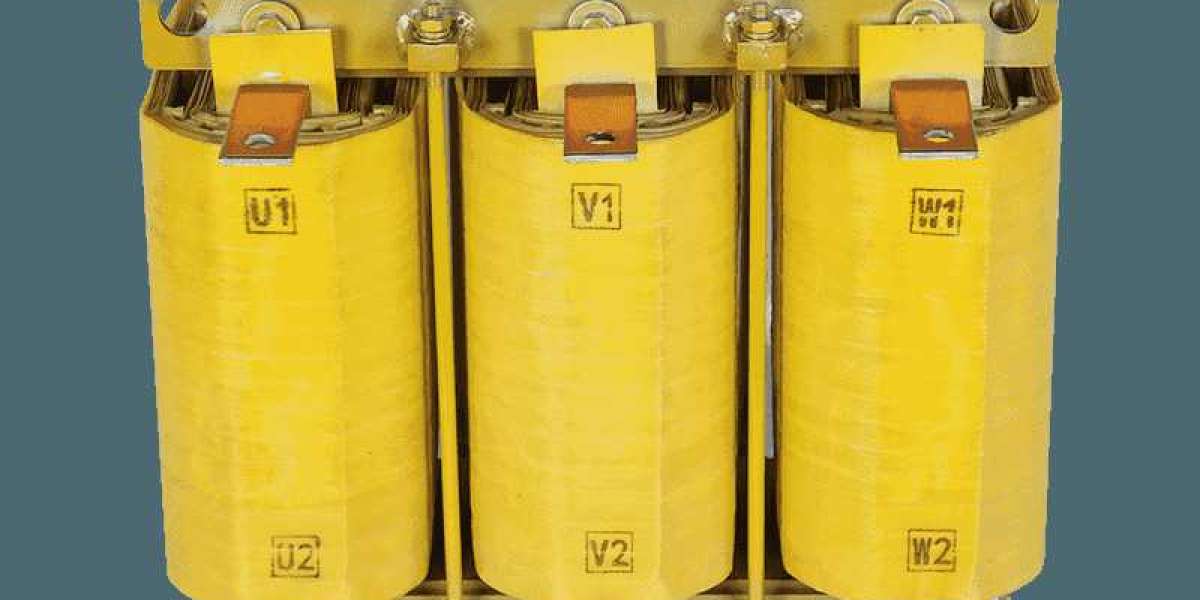In modern motor drive systems, an AC output reactor plays a critical role in ensuring the smooth and efficient operation of motors. This device is often overlooked, but its contribution to enhancing motor performance, extending motor life, and ensuring electrical stability is significant. This article delves into the purpose, functionality, and advantages of AC output reactors in motor applications.
What is an ?
An AC output reactor is essentially an inductive component placed between a motor drive (such as a Variable Frequency Drive, or VFD) and the motor itself. It functions as a buffer or filter that helps reduce electrical noise, harmonics, and voltage spikes, all of which can adversely affect motor operation.
The reactor is typically made up of windings of copper or aluminum wire wound around a magnetic core. It operates by introducing inductance into the motor circuit, which opposes rapid changes in current, thereby "smoothing" the electrical signal that reaches the motor. This smoothing effect protects the motor from harmful electrical disturbances.
Purpose of an AC Output Reactor
The primary purpose of an AC output reactor in a motor drive system is to:
Reduce Harmonics: Harmonic distortion occurs when the sinusoidal waveform of the motor’s electrical supply is altered. This can lead to increased heat generation and inefficiency in the motor. AC output reactors help in reducing these harmonics, ensuring a more consistent and cleaner electrical signal.
Mitigate Voltage Spikes and Transients: Sudden voltage spikes or transients can cause damage to motor insulation and other sensitive components. By limiting these spikes, the reactor protects the motor from potential failure and downtime.
Decrease Motor Heating: Excessive electrical noise and harmonics can cause a motor to overheat. AC output reactors limit these issues, helping to maintain optimal motor temperature and thus extending the motor’s lifespan.
Protect Motor Windings: The reduction of high-frequency noise and voltage spikes helps prevent insulation damage to the motor windings, which is a common cause of motor failure.
Extend Cable Lengths: When motors are installed far from the VFD, the long cable lengths can introduce additional electrical noise and voltage drops. An AC output reactor helps in overcoming these issues, allowing for the use of longer cables without sacrificing performance or reliability.
How Does an AC Output Reactor Work?
An AC output reactor works by increasing the inductance in the circuit between the drive and the motor. Here’s a basic breakdown of its operation:
- When electrical current flows through the reactor’s coils, it generates a magnetic field that resists changes in current.
- This resistance smooths out rapid fluctuations, preventing the motor from receiving harmful electrical transients.
- The reactor’s inductive properties also help filter out high-frequency harmonics and noise from the electrical supply.
By performing these functions, the AC output reactor ensures that the motor operates in a more stable and reliable manner, free from electrical disturbances that can cause wear and tear over time.
Benefits of Using an AC Output Reactor for Motors
Incorporating an AC output reactor into motor drive systems provides a range of benefits, including:
Improved Motor Performance: With a cleaner and more stable electrical supply, motors can operate more efficiently, leading to improved performance and reduced power losses.
Extended Motor Life: By protecting the motor from voltage spikes, transients, and excessive heating, the lifespan of the motor is significantly extended.
Reduced Maintenance Costs: Motors protected by AC output reactors are less likely to experience premature failure, which reduces the need for frequent repairs or replacements.
Enhanced System Stability: In applications where long cable runs are required, the reactor helps maintain stable electrical conditions, preventing voltage drops and signal interference.
Energy Savings: Smoother operation leads to reduced energy losses, which translates to lower power consumption and reduced operational costs over time.
Applications of AC Output Reactors
AC output reactors are commonly used in various industrial applications where motor drives are employed, including:
- Pumps and Compressors: These motors often face harsh electrical conditions, and the use of reactors ensures their long-term reliability.
- Conveyors and Lifts: Systems that require precise and stable motor operation benefit from the protection and performance enhancement provided by reactors.
- HVAC Systems: In heating, ventilation, and air conditioning systems, maintaining motor efficiency and extending equipment life is critical, making reactors a valuable addition.
- Industrial Machinery: High-precision machinery used in manufacturing and processing industries benefits from smoother electrical signals and reduced noise.
The role of an AC output reactor in motor drive systems cannot be understated. By reducing harmonics, mitigating voltage spikes, and protecting motor components, this device ensures that motors operate efficiently and reliably over their lifetime. Whether in industrial, commercial, or residential settings, an AC output reactor is a valuable component that contributes to the overall performance, durability, and cost-effectiveness of motor-driven systems.













